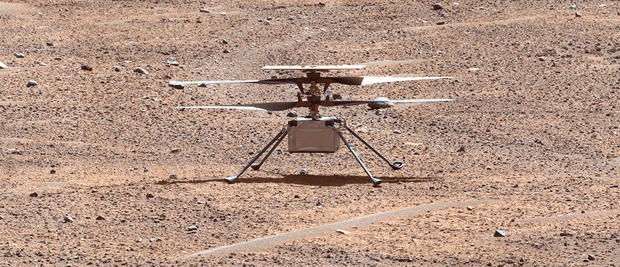
The NASA helicopter on Mars, the first to ever fly on another planet, has concluded its long mission due to damage to its rotor.
Designed to fly just five times over 30 days, NASA’s Ingenuity helicopter lasted nearly three years, soaring across the surface of Mars and logging 72 flights before a hard or tilted landing that damaged one or more rotors forced flight controllers to finally bring the marathon mission to a close.
Teddy Tzanetos, the Ingenuity project manager at NASA’s Jet Propulsion Laboratory in Pasadena, California, expressed on Thursday that just like the Wright brothers who unlocked the skies on Earth, they strongly believe that Ingenuity has accomplished the same feat on Mars. Tzanetos also added that they are immensely proud of their resilient and pioneering little rover.
“While Ingenuity will not be able to fly again, plans for new generations of Mars helicopters are already in the works. We are eager to see what the future will bring in terms of air travel on Mars.”
NASA
Ingenuity, weighing only 4 pounds, was constructed at JPL and transported to Mars by being connected to the underside of NASA’s Perseverance rover. The rover successfully landed on the Red Planet on Feb. 18, 2021. In order to reduce expenses, the helicopter, powered by solar energy, was primarily made using readily available parts.
The initial of five scheduled test flights to prove the possibility of flight in the sparse atmosphere of Mars.
Laurie Leshin, Director of JPL, explained that helicopters on Earth are usually limited to flying below 25,000 feet due to lack of sufficient lift. However, on Mars, the atmosphere is equivalent to being at an altitude of 80,000 to 90,000 feet on Earth.
According to Leshin, Ingenuity experienced the “three stages of a daring concept,” referencing a humorous engineering saying.
According to her, the initial response was mockery, followed by strong resistance, and eventually, the idea was embraced as obvious. In this instance, the groundbreaking concept was the possibility of flying a helicopter on Mars, a feat that was previously deemed impossible.
The initial goal was to complete only five flights, but there was optimism among engineers that the compact drone would surpass expectations. And indeed, it did. After its seventh flight, NASA utilized it as a scout for the Perseverance mission, flying ahead and providing images of future paths to JPL mission planners.
For a number of weeks,then months
After almost three years, Ingenuity persevered and completed multiple flights above the Jezero Crater floor, where Perseverance is searching for evidence of past habitability. It also collected rock and soil samples to eventually bring back to Earth.
However, on January 18th, following Ingenuity’s emergency landing during its 71st flight, controllers instructed a brief vertical flight in order to accurately determine its position in a terrain lacking distinct features.
The lack of distinct features on the terrain may have caused Ingenuity’s flight computer to become disoriented, resulting in the abrupt end of flight 71. It then awaited instructions from Earth.
NASA
The helicopter successfully departed on flight 72 according to schedule, achieving a height of 40 feet. After hovering for 4.5 seconds, it began its descent.
However, when the altitude reached around 3 feet, Ingenuity lost communication with the flight controllers. The following day, communication was reestablished and images received on Earth a few days after revealed damage to one of its high-speed rotors, likely caused by an uneven landing.
The majority of lift for a helicopter is produced by the outer 25% to 35% of its rotors, and these blades must be carefully balanced to prevent dangerous vibrations. In a photograph, it was observed that one rotor’s shadow was missing its tip, most likely due to contact with the surface of Mars.
“According to Tzanetos, the missing 25% of one blade has significantly reduced our thrust capacity. Even if the blades were balanced, Ingenuity’s precision in roll and pitch control would still be affected.”
Tzanetos stated that based on the evidence, it is unlikely that we will be able to continue flying.
On Thursday evening, it was the 1,000th sol, or Martian day, since Ingenuity was deployed on the surface of Mars. Engineers are still able to communicate through radio and may attempt to rotate the blades for a clearer look at the rotors. However, as Perseverance carries on with its mission and travels further away, connection will eventually be lost.
According to Tzanetos, when facing a longer mission like Ingenuity’s, there is always a lingering thought in the back of your mind that today may be the final day. So, when the photo appeared on the screen, it was a melancholy moment.
However, this is quickly followed by joy and a sense of accomplishment for what we achieved. It is truly remarkable the journey she has been on, and each of those sols deserves to be celebrated.
More
More
Source: cbsnews.com
